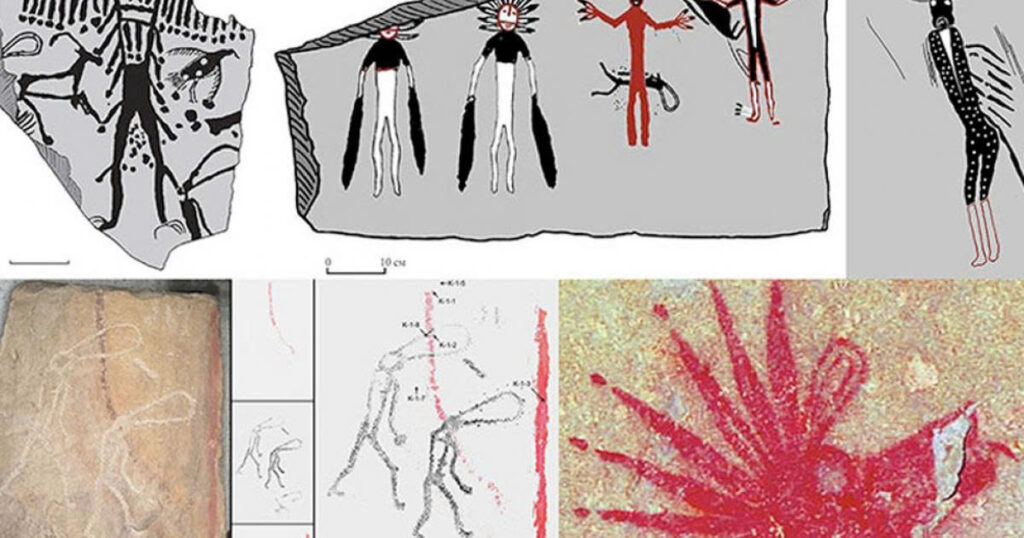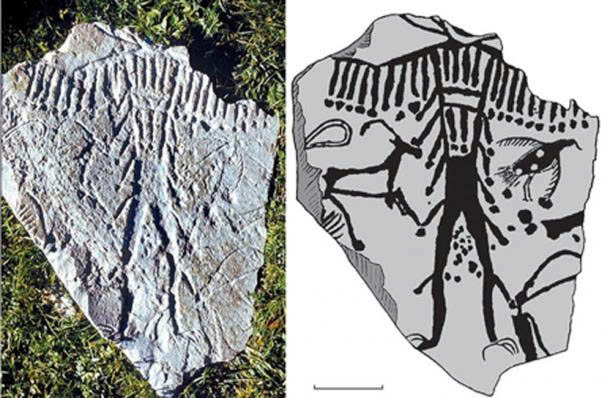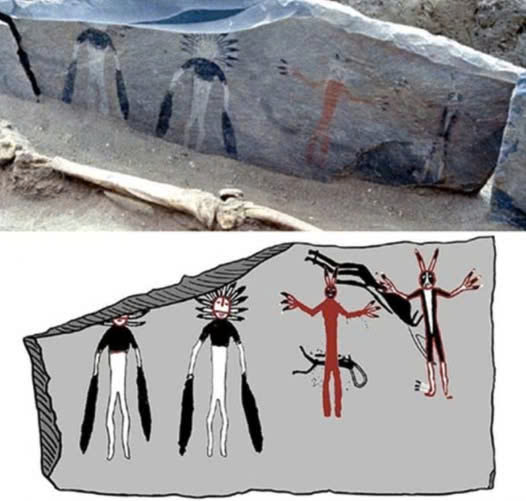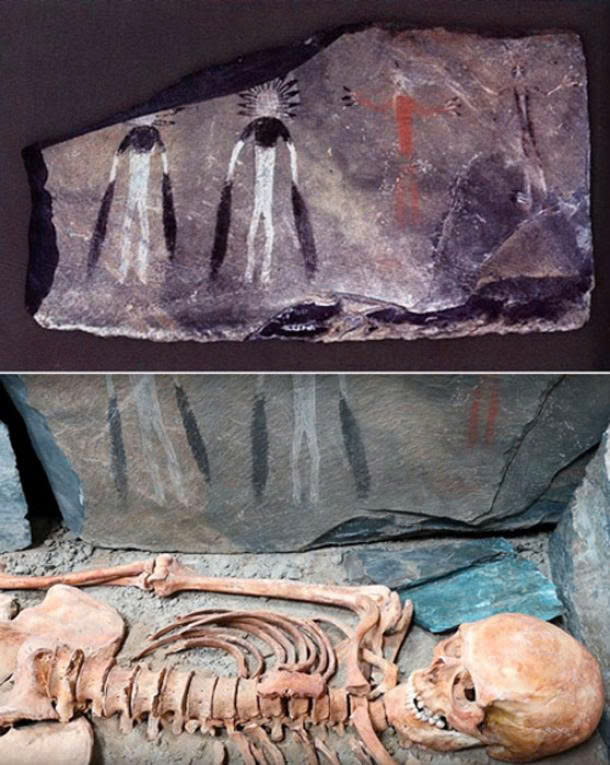In the remote Altai Mountains of Russia, nestled within the humble village of Karakol, archaeologists made a discovery in 1985 that would forever change our understanding of ancient Siberian cultures. Hidden beneath the earth for five millennia lay a burial site adorned with some of the most spectacular polychrome rock paintings ever discovered in the region.
A Remarkable Archaeological Find
The Karakol burial site represents a watershed moment in Siberian archaeology. When researchers first uncovered the stone slabs forming the tomb’s walls, they were astonished to find vivid paintings executed in white, red, and black pigments—the first documented multi-colored rock art of its kind in Siberia.

What makes this discovery particularly significant is not just its age, but the remarkable preservation of the artwork. Despite being created approximately 5,000 years ago, these images remain striking in their clarity and artistic sophistication, offering modern observers a direct visual connection to our distant ancestors.
Decoding the Ancient Imagery
Mysterious Figures and Symbols
The petroglyphs found within the Karakol tomb present a fascinating array of symbolic imagery that continues to intrigue experts:
The walls feature stylized humanoid figures caught in dynamic postures, many appearing to be engaged in ceremonial dances or rituals. Some hold implements resembling knives or tools, suggesting activities of cultural significance.

Alongside these human forms are curious zoomorphic creatures—beings that blend human and animal characteristics. Among the most notable is a rabbit-headed figure that seems to inhabit a liminal space between the mundane and mythical worlds.
Cosmic Connections
The ancient artists of Karakol clearly had their eyes turned toward the heavens. Throughout the compositions are numerous circular motifs and radiating lines likely representing celestial bodies. These cosmic symbols suggest a sophisticated cosmology and perhaps a belief system that connected earthly events with celestial movements.
Interwoven among the figurative elements are complex geometric patterns—zigzags, parallel lines, and triangular forms—creating a rhythmic visual language that frames the entire narrative. These abstract designs may represent early attempts at written communication or could serve as spiritual or shamanic symbols.
Cross-Cultural Connections
One of the most fascinating aspects of the Karakol petroglyphs is their uncanny resemblance to indigenous rock art found thousands of miles away in North America and Mexico. The stylistic similarities in color usage, form, and geometric patterning have led some researchers to hypothesize possible cultural connections between ancient Siberian peoples and Native American tribes.

The Bering land bridge, which once connected Siberia and North America, could have facilitated the movement of not just populations but also artistic traditions and spiritual beliefs. This potential connection across continents adds another layer of intrigue to the already remarkable Karakol discovery.
Video
Preserving an Irreplaceable Heritage
Today, the Karakol burial site faces numerous preservation challenges. Located in a harsh environment and vulnerable to both natural deterioration and human interference, these irreplaceable artifacts require dedicated conservation efforts.

Recognition as a UNESCO World Heritage candidate underscores the global significance of the site and has helped mobilize resources for its protection. Archaeologists and preservationists continue to document and study these ancient paintings, employing modern technology to unlock their secrets while ensuring their survival for future generations.
A Living Link to Our Ancestral Past
The Karakol petroglyphs offer more than just aesthetic appreciation—they provide a rare glimpse into the minds and beliefs of people who lived thousands of years ago. Through these vibrant images, we can begin to understand how our ancestors interpreted their world, celebrated their rituals, and expressed their deepest spiritual convictions.

As research continues, the Karakol site stands as a testament to humanity’s enduring creative spirit and our shared cultural heritage. These ancient paintings, created by hands long since returned to dust, continue to speak across the millennia, reminding us of our common human journey and the universal language of art that connects us all.

